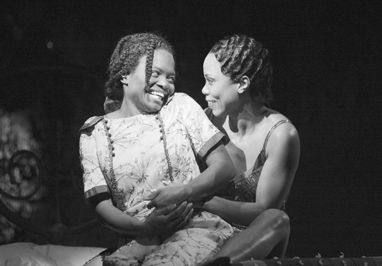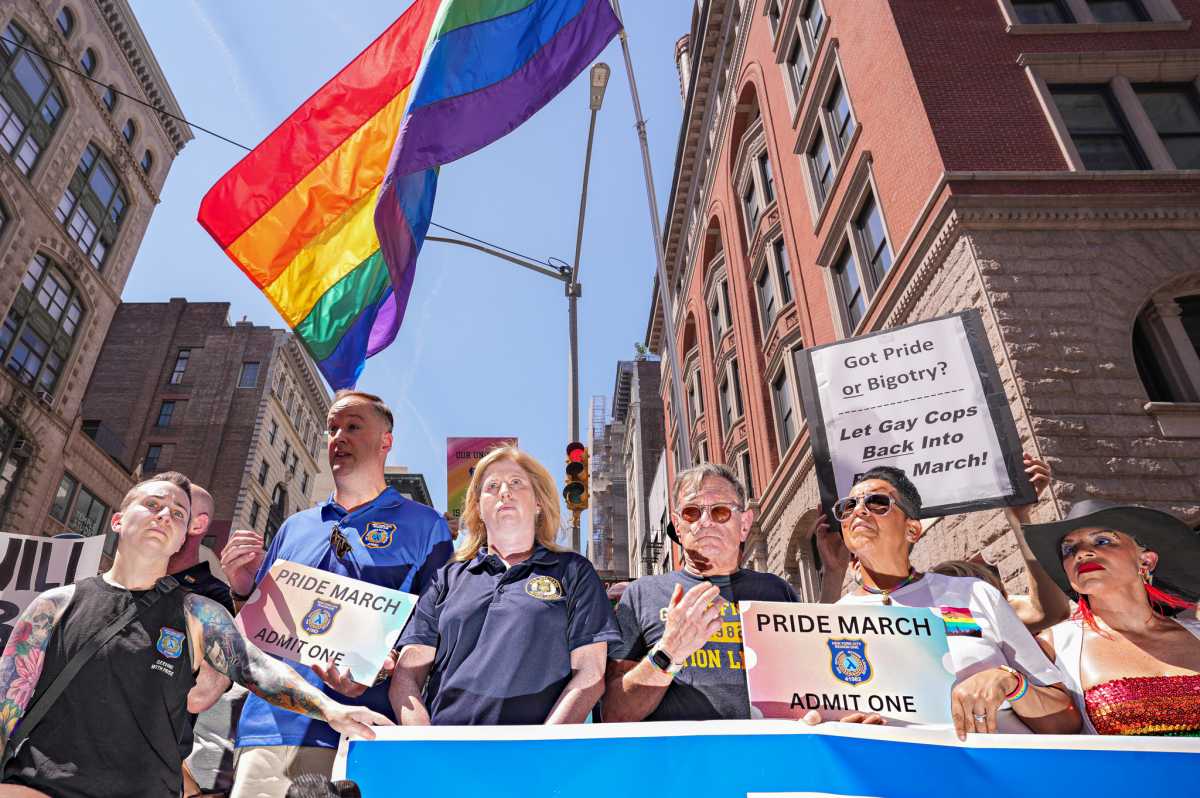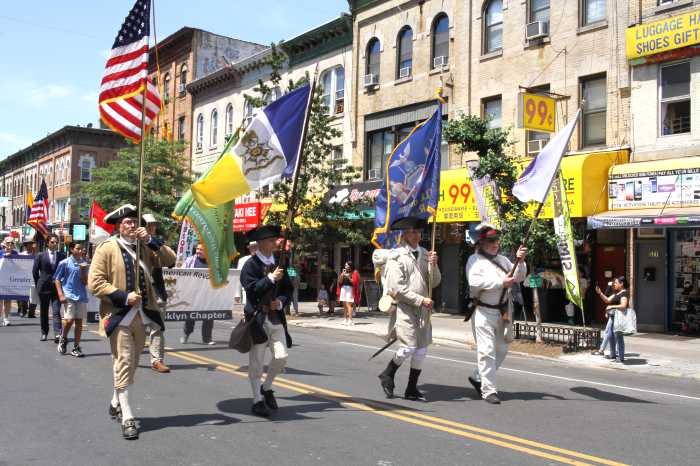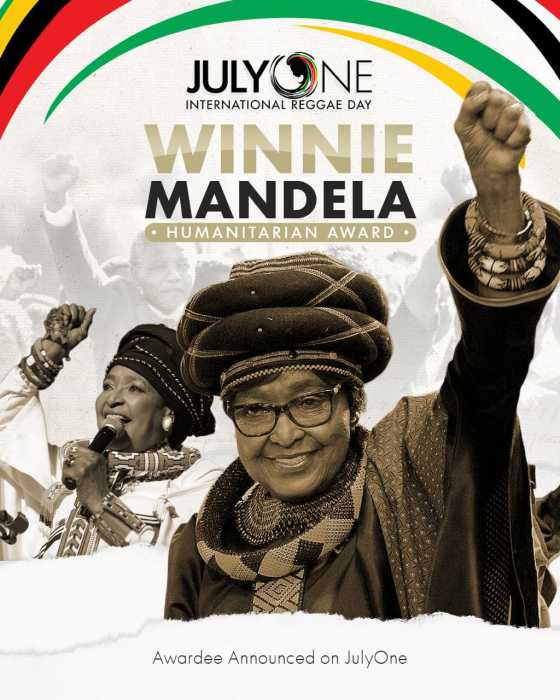A colorful journey worth taking, but check your cynicism at the door
Spousal abuse. Rape. Incest. Murder. Not exactly the stuff of which Broadway musicals are made. At least not musicals that expect to recoup their investment.
But in bringing “The Color Purple” to the stage, at a cost of $10 million, lead producer Scott Sanders knew better. He assembled a crack creative team that was able to amplify the uplifting themes from the landmark 1982 Pulitzer Prize-winning novel by Alice Walker—faith, overcoming adversity, finding self-love—and turn the doleful epic into a toe-tapping, knee-slapping feel-good fest, tied with a bow just in time for the holidays.
But is the package just a bit too tidy?
Perhaps. But nobody said striking the right equilibrium between hell and hope would be easy. Especially with a grand story about a homely, downtrodden black girl named Celie—admirably played by LaChanze—finding her way in post-slavery America, which spans 40 years and is populated with dozens of indelible characters.
Indeed “The Color Purple,” to which Oprah Winfrey wisely lent her golden seal of approval, does not shy away from the indelicate. Early on, Celie’s stepfather swipes her newborn baby, who may in fact be his, then tries to sell Celie to a mean, whip-wielding Mister (Kingsley Leggs) to basically be his slave. “I don’t want Celie. She UGLY!” he says. When the deal is sweetened with a cow, Mister grudgingly takes her. She’s only 14.
The expansive musical, where we see no white folk yet feel their menace all the same, takes place in rural Georgia between 1909 and 1949, when it was oddly okay for men to give their wives “a good solid beating.”
Living with Mister, bruises and tears are parts of Celie’s daily grind. When her sister and only friend, Nettie (Renée Elise Goldsberry), high-tails it for greener pastures, Celie tries to find succor in regular prayers to God, but they go unanswered.
Sound like a downer? Not to worry—pathos is quickly elbowed aside by vivacious scenes of pleasure-seeking. In “Brown Betty,” the men, led by Mister’s now-grown, implausibly well-adjusted son, Harpo (Brandon Victor Dixon), rhapsodize about Shug Avery as they build a juke joint. Shug is Mister’s sexy sometime mistress who spoons out sugar liberally to any and all, even Celie.
One of the most raucous numbers, a kind of burlesque called “Push da Button,” Shug’s salacious ode to orgasm, goes overboard in its urge to please—“Ya gotta push it if ya wanna come in.” Another crowd pleaser is “Hell No!” wailed by hefty powerhouse, Sofia (Felicia P. Fields), who marries Harpo but refuses to follow the rules.
Also on hand to banish the gloom is a wickedly delightful trio of gossipmongers, who serve as a kind of Greek chorus throughout the proceedings.
The relationship between Celie and Shug is handled with grace and sensitivity. Their tender song together, “What About Love,” is as stirring as, say, a duet with Laurey and Curly in “Oklahoma!” Kudos to the creative team for embracing this extraordinary Sapphic bond at the risk of alienating a sizeable chunk of potential audience.
LaChanze, who starred in “Once On This Island,” delivers a boldly nuanced performance that draws from a deep well of adversity of her own. When she was eight months pregnant, she lost her husband in the September 11 World Trade Center attacks.
As the sultry-yet-perceptive Shug, Elisabeth Withers-Mendes, a Broadway novice with an impressive pop music resume—is a sensation. You may recognize her voice from DJ Tony Moran’s chartbusting “Queer as Folk” soundtrack.
The score, a heady mix of gospel, jazz, soul, and pop, is credited to newcomers Brenda Russell, Allee Willis, and Stephen Bray, successful songwriters for top stars like Madonna. It’s no surprise that music whiz Quincy Jones is one of the show’s 18 producers. The dazzling choreography, by the way, is by Donald Byrd.
The book, by Marsha Norman, who won the Pulitzer Prize for “’night Mother” and a Tony Award for “The Secret Garden,” is a miracle of reshaping. How she was able to winnow down the morass of material into a cohesive, heart-tugging tale is one of the wonders of the Broadway season. Director Gary Griffin gets credit for this feat as well.
Deserving special praise is the magnificent realization of the titular purple theme. As a symbol of truth unspoiled, God’s most beautiful hue, we see washes of purple in the heavens above at key moments. The vast, ever-changing sky, a key feature of the set designed by John Lee Beatty, is so poetically expressive it could be listed as a character.
In the high-energy scenes set in Africa, where the inhabitants are free and unfettered, a deep purple saturates the stage. Nettie, who becomes a missionary there, writes joyously of “Shiny blue-black people, lookin’ real fine.”
Towards the show’s rapturously happy ending, when Celie learns to love herself and take control, wisteria blooms, in all its lavender glory. Her victories elicited cheers of “All right!” and “You go, girl!” from a woman behind me.
Naturally, the show’s soaring closing anthem, a heart-pounder for sure, is titled “The Color Purple.”
The improbable sugar-coated climax is right out of Rodgers and Hammerstein. Celie, who has launched a successful business that perfectly symbolizes her independence, reunites with loved ones long lost. Mister undergoes a miraculous transformation and is thoroughly redeemed. Sophia, once beaten into a stupor, is healed.
gaycitynews.com

































